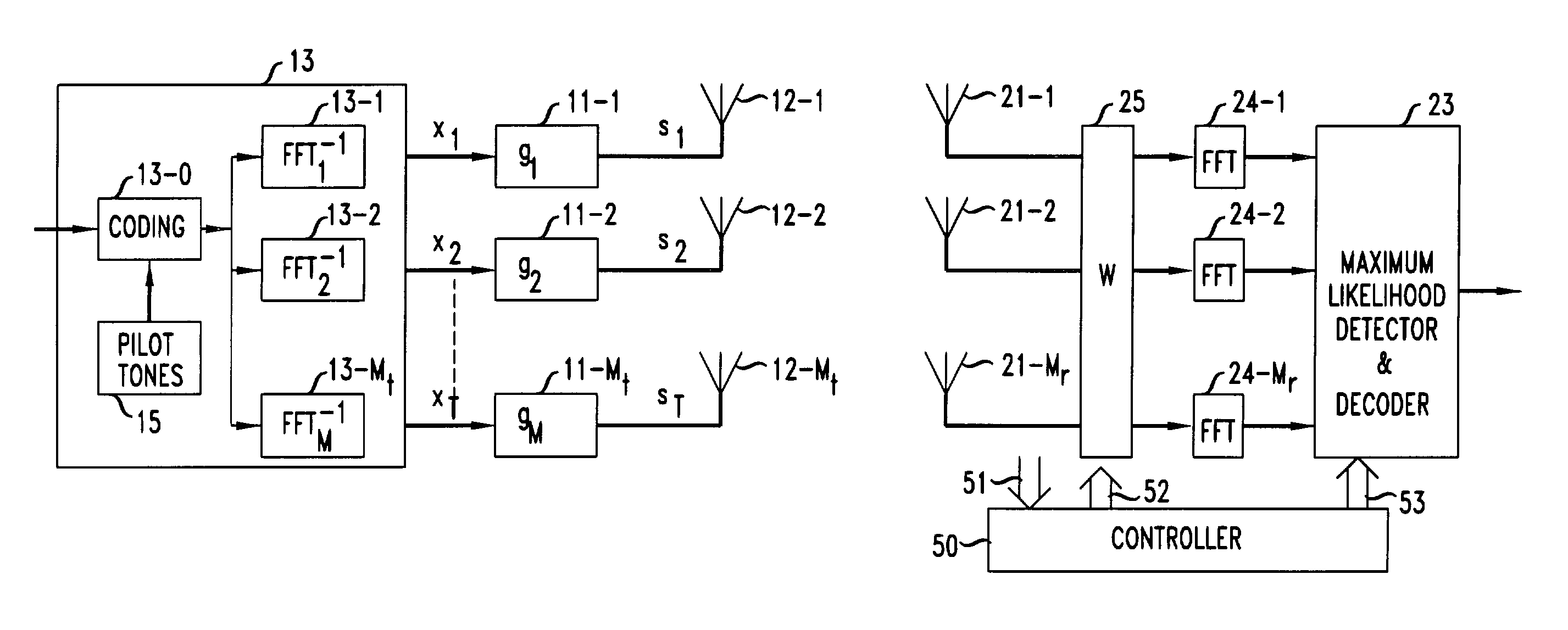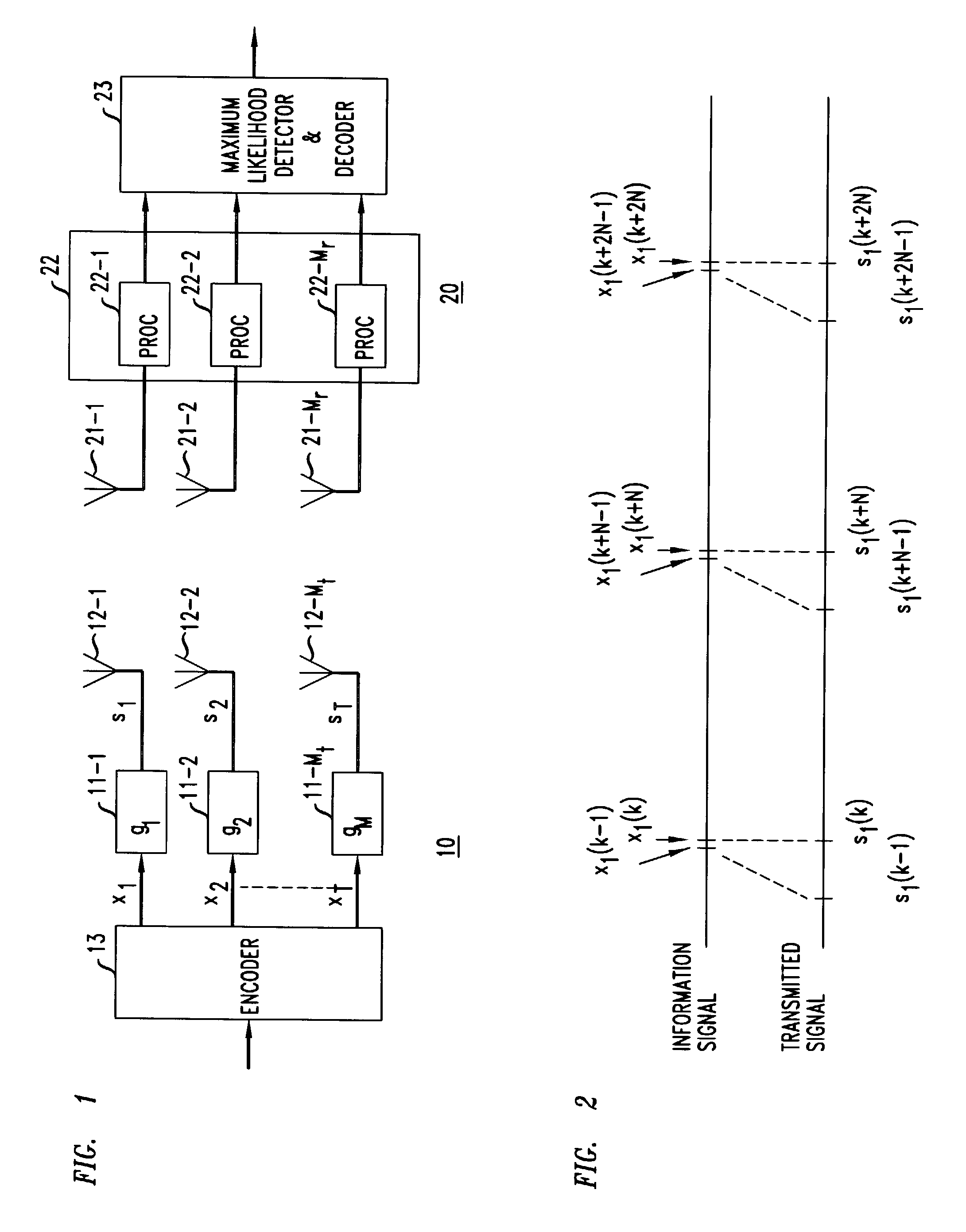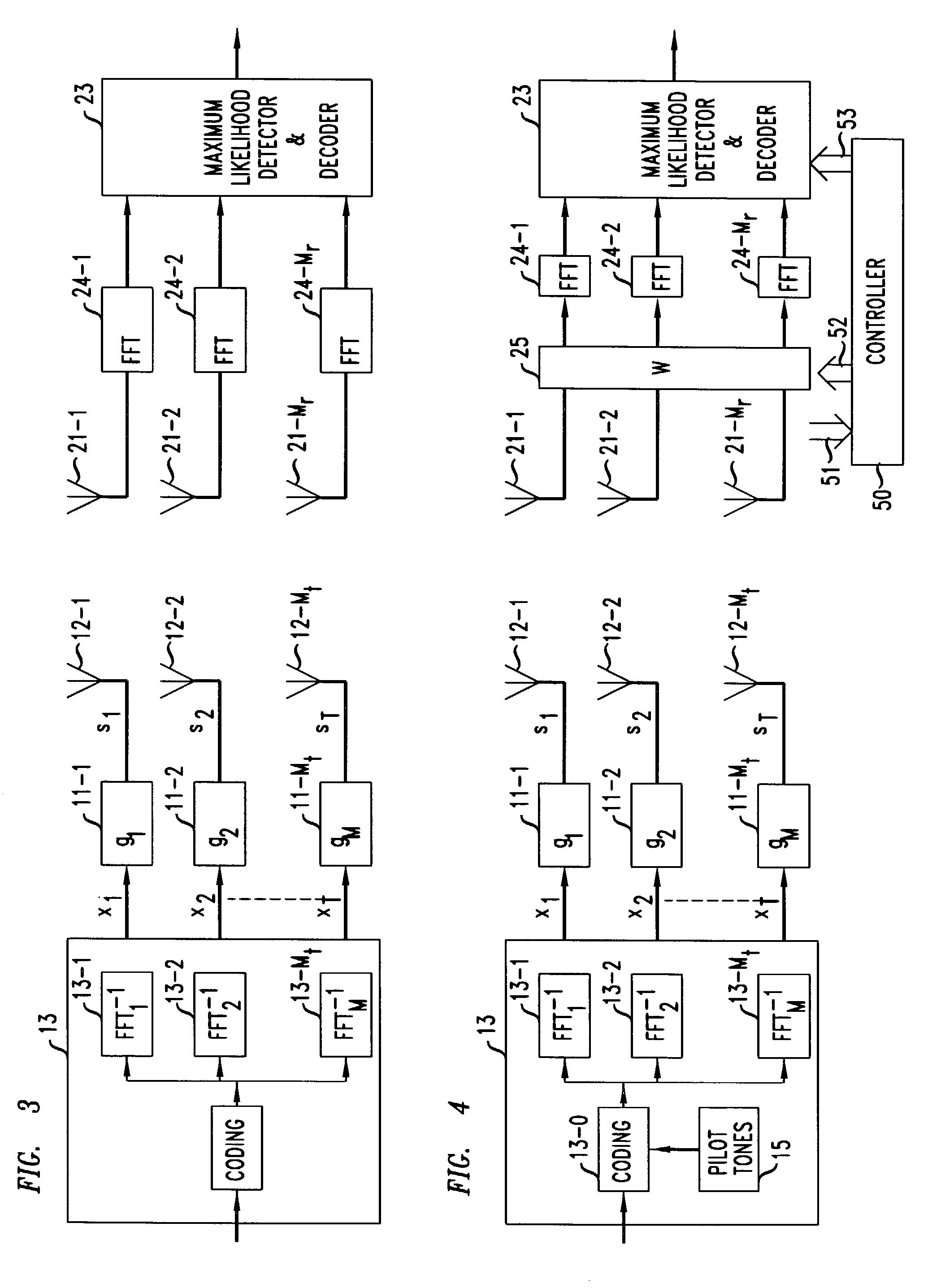Amelioration in inter-carrier interference in OFDM
a technology of carrier interference and amelioration, applied in the field of wireless communication, can solve the problems of severe deterioration of service quality, inter-carrier interference, and inability to guarantee time invariability within a transmission block, and achieve the effect of improving channel coefficient estimates and minimizing inter-carrier interferen
- Summary
- Abstract
- Description
- Claims
- Application Information
AI Technical Summary
Benefits of technology
Problems solved by technology
Method used
Image
Examples
Embodiment Construction
[0012]FIG. 1 presents a general block diagram of a wireless arrangement where a transmitter 10 includes Mt transmitting antennas 12-1, 12-2, . . . 12-Mt, each of which transmits a signal s1 that is obtained by processing input signal x1 through a processing unit g1, shown by units 11-1, 11-2 and 11-Mt. It is assumed that the channel's impulse response function is time-varying. A receiver 20 includes Mr receiving antennas 21-2, 21-2, . . . 21-Mr, and the received signals are applied to processing unit 22.
[0013]When considering only a single transmitting antenna and a single receiving antenna, the received signal y, at time t, can be expressed by
y(t)=∫b(t,τ)s(t−τ)dτ+z(t) (1)
where b(t, τ) is the impulse response of the time-varying channel between the transmitting antenna and the receiving antenna, as a function of τ, at time t, and s(t−τ) is the transmitted signal at time t−τ. When sampled at a sufficiently high rate (above 2Wt+2Ws, where Wt is the input bandwidth and Ws is the bandw...
PUM
 Login to view more
Login to view more Abstract
Description
Claims
Application Information
 Login to view more
Login to view more - R&D Engineer
- R&D Manager
- IP Professional
- Industry Leading Data Capabilities
- Powerful AI technology
- Patent DNA Extraction
Browse by: Latest US Patents, China's latest patents, Technical Efficacy Thesaurus, Application Domain, Technology Topic.
© 2024 PatSnap. All rights reserved.Legal|Privacy policy|Modern Slavery Act Transparency Statement|Sitemap



